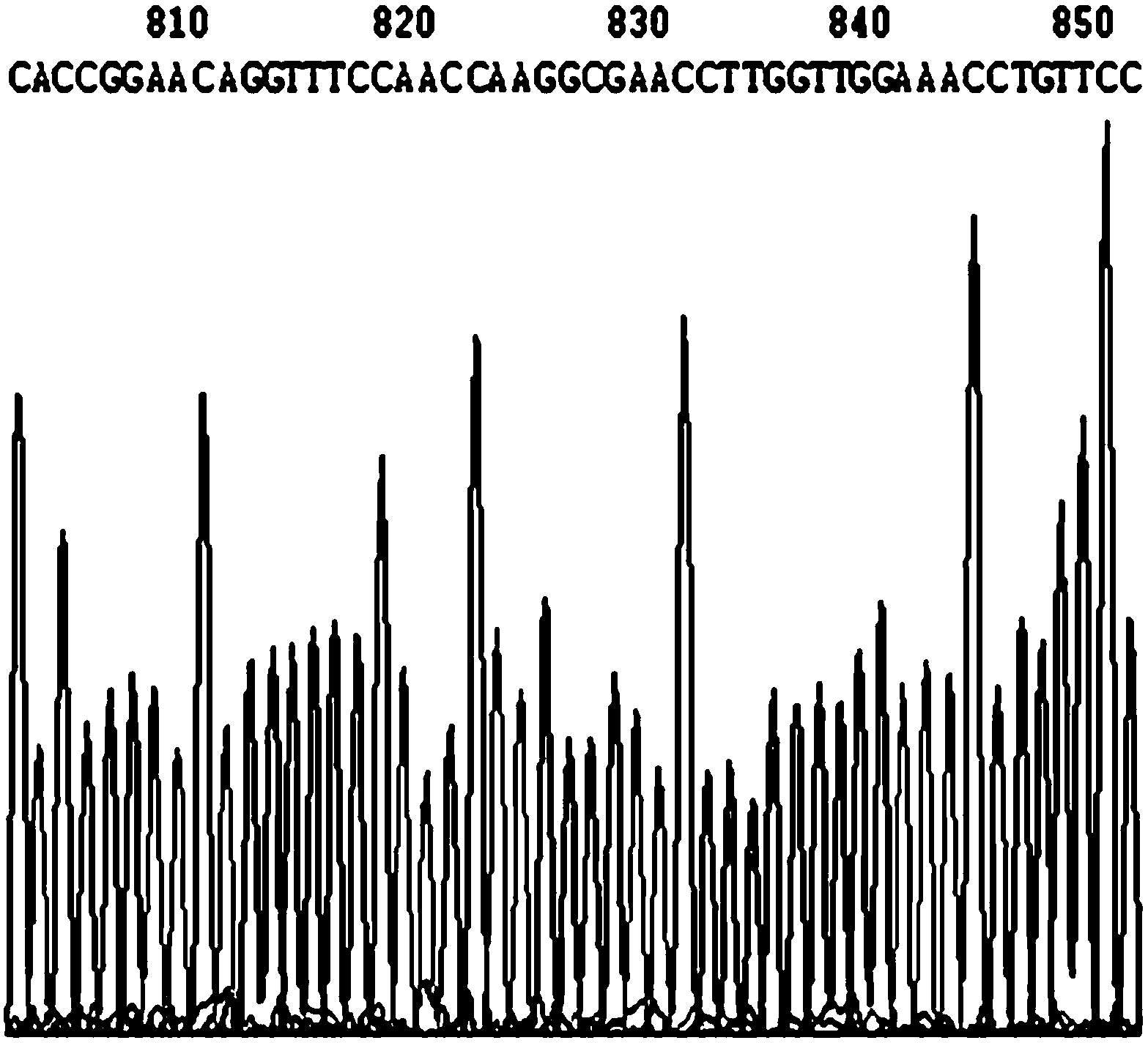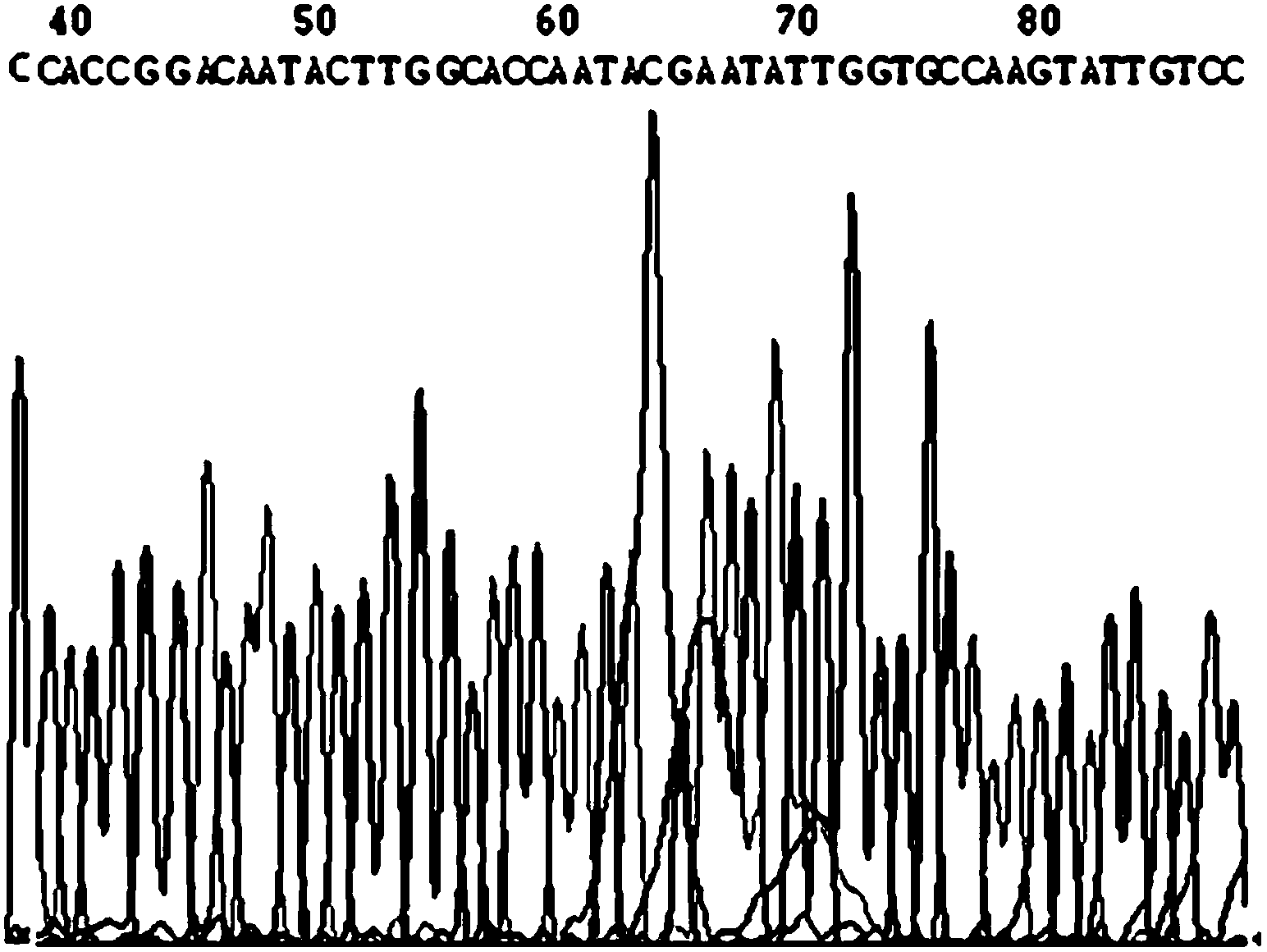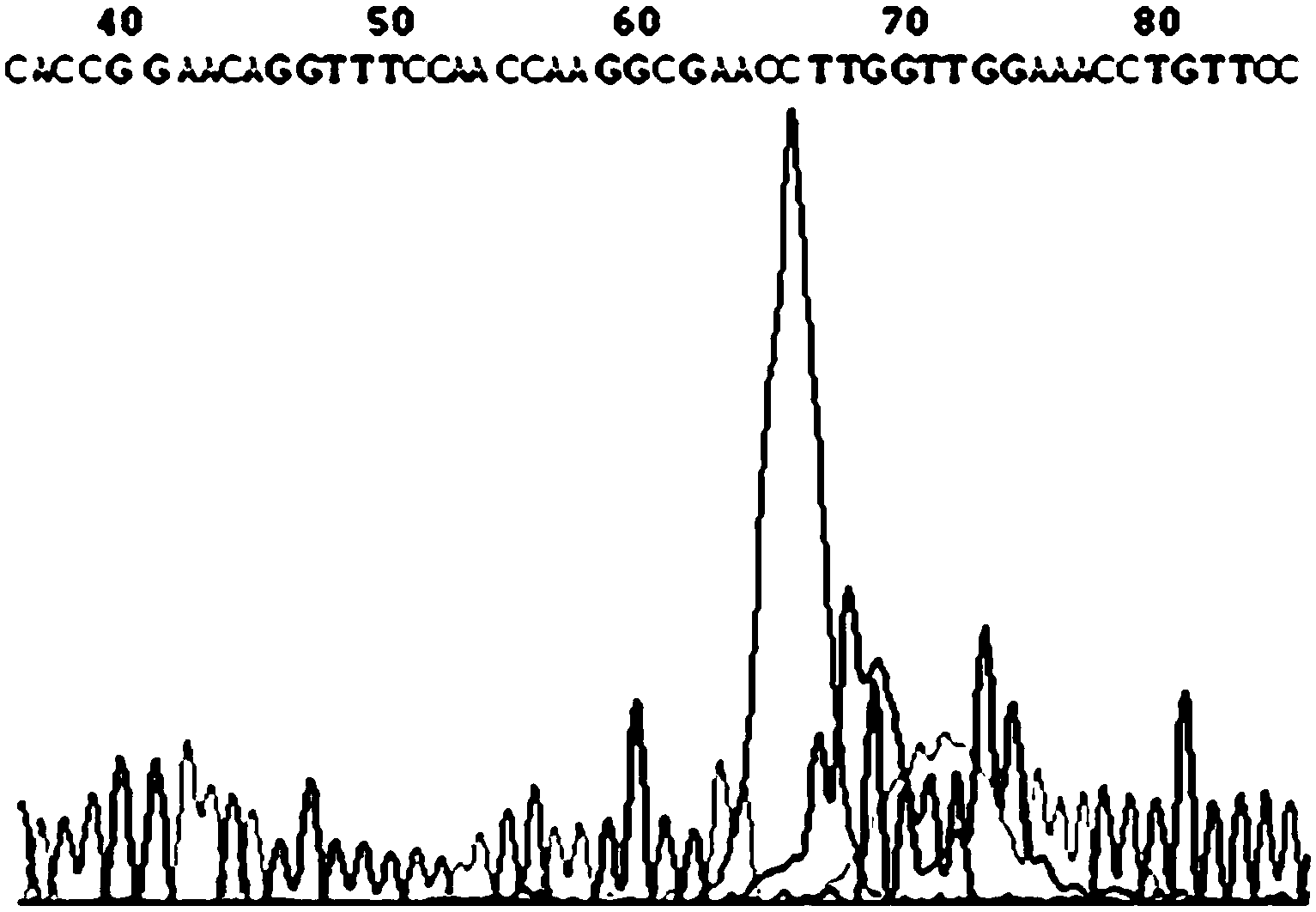Ribonucleic acid interference (RNAi) for inhibiting porcine reproduction and respiratory syndrome virus replication and preparation method of RNAi
A lentiviral, replication-deficient technology, used in DNA preparation, botanical equipment and methods, biochemical equipment and methods, etc.
- Summary
- Abstract
- Description
- Claims
- Application Information
AI Technical Summary
Problems solved by technology
Method used
Image
Examples
Embodiment 1
[0048] 1. Generation of ds oligo expressing shRNA
[0049] With the help of the online design software (BLOCK-iT) of Invitrogen Company of the United States TM RNAi Designer), determine the DNA insertion sequence corresponding to the specific shRNA fragment 875 and 1010 required by the pEN / U6 vector, and send it to Yubao Bioengineering (Dalian) Co., Ltd. for synthesis and annealing to generate ds oligo. The insertion sequence is as follows:
[0050] 875: 5'→3'
[0051] SEQ ID NO. 1: TCACCGGAACAGGTTTCCAACCAAGGCGAA
[0052] CCTTGGTTGGAAACCTGTTCC
[0053] SEQ ID NO. 2: B AAAAGGAACAGGTTTCCAACCAAGGTTCG
[0054] CCTTGGTTGGAAACCTGTTCC
[0055] 1010: 5'→3'
[0056] SEQ ID NO. 3: T CACCGGACAATACTTGGCACCAATACGAA
[0057] TATTGGTGGCAAGTATTGTCC
[0058] SEQ ID NO. 4: B AAAAGGACAATACTTGGCACCAATATTCG
[0059] 2. ds oligo is connected with pEN / U6 vector to construct pEN / U6-shRNA
[0060] Connection reaction system:
[0061] 2.1 Generation of double-stranded oligonu...
Embodiment 2
[0094] 1-6 steps are the same as in Example 1.
[0095] 7. Preparation of sample 2
[0096] (1) Construction of expression plasmid pEGFP+ Nsp9
[0097] In order to verify the ability of Marc-145 cells expressing shRNA to inhibit target genes, eukaryotic expression vectors containing GFP and Nsp9 genes were constructed in this study. The specific construction method is as follows:
[0098] The amplified Nsp9 gene and pEGFP-N1 empty vector were digested with BamH I and XhoI respectively and recovered, then ligated with T4 DNA ligase at 16°C for 3 hours, transformed into competent E.coli JM109, and used 50 μg / mL card Namycin-resistant LB plates were screened, and positive recombinant plasmids were obtained after identification by PCR and BamH I and Xho I double enzyme digestion. The recombinant plasmid with correct sequence and reading frame was named pEGFP+Nsp9.
[0099] (2) Transfection of Marc-145 cells with recombinant plasmid pEGFP+ Nsp9
[0100] Culture Marc-145 cells ...
Embodiment 3
[0106] 1-7 steps are with embodiment 1.
[0107] 8. TCID50 to measure the antiviral effect of shRNA
[0108] Get 1 part by the PRRSV cytotoxicity that step 7 cultivates among the implementation case 1, do ten times ratio dilution continuously (10 -1 ~10 -11 ), add 100 μL of virus solution of each dilution in each well, make 8 replicate wells for each dilution, add maintenance solution in the 12th column as a negative control, and measure TCID50 as follows:
[0109] 8.1 Use DMEM containing 10% calf serum to pass the well-grown Marc-145 cells to a 96-well culture plate, and place them in a cell culture incubator until the bottom of the well is covered.
[0110] 8.2 Aspirate the culture medium in the cell wells, rinse twice with serum-free DMEM, then add 100 μL of virus solution of each dilution to each well, absorb at 37°C for 1 hour, discard the virus dilution solution, and wash with serum-free DMEM Rinse twice, add 100 μL DMEM containing only 1% double antibody to continue ...
PUM
 Login to View More
Login to View More Abstract
Description
Claims
Application Information
 Login to View More
Login to View More - R&D
- Intellectual Property
- Life Sciences
- Materials
- Tech Scout
- Unparalleled Data Quality
- Higher Quality Content
- 60% Fewer Hallucinations
Browse by: Latest US Patents, China's latest patents, Technical Efficacy Thesaurus, Application Domain, Technology Topic, Popular Technical Reports.
© 2025 PatSnap. All rights reserved.Legal|Privacy policy|Modern Slavery Act Transparency Statement|Sitemap|About US| Contact US: help@patsnap.com



